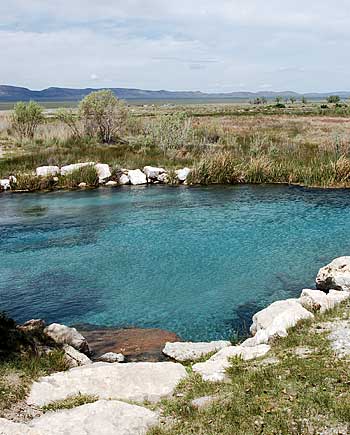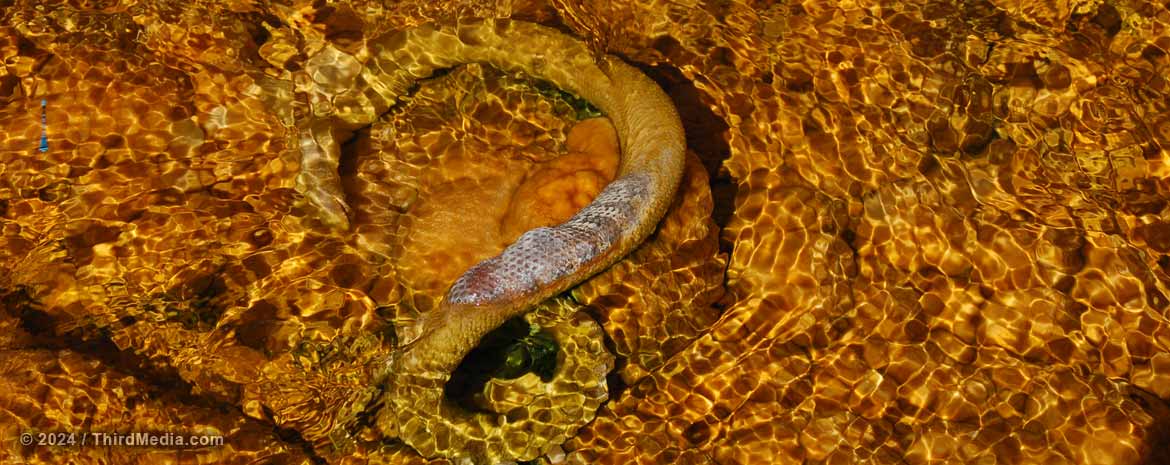
Map coordinates:
38.9494, -115.701
Water temperature:
93.02°F
Site ID:
NV-352.1

Big Warm Spring on the Duckwater Shoshone Reservation. Image courtesy of Matt Bowers, Third Media.
Two main warm spring areas are located near the small community of Duckwater, which is on the Duckwater Indian Reservation in northeastern Nye County. Big Warm Spring or Duckwater Spring is located in Sec. 32, Tl3N, R56E and has a reported temperature of about 32.5°C (Eakin and others, 1951; Mifflin, 1968; Van Denburgh and Rush, 1974). Little Warm Spring, in Sec. 5, Tl2N, R54E, is about the same temperature. Both springs rise in alluvium a short distance west of a north-striking, range-bounding fault (Stewart and Carlson, 1974). The area may have been called the Burrell Hot Springs district in the past. The water is used locally.
A geothermal catfish-growing facility was operated at this site, on the Duckwater Indian Reservation, between 1982 and the early 1990s. When in operation, over 136,000 kg of prime 0.2 kg catfish filets per year were produced (Geo-Heat Center Quarterly Bulletin, December 1992).
[This spring is located on tribal land. Visitors should seek permission before planning a trip.]
Get Topo Map On the Web New Hotspring Search
All snakes can swim.... but not in scalding mineral water! This one suffered a rather quick fate and is now being calcified into the streambed. Traveling north towards Cherry Creek, Nevada, along the old shelf road on the west side of Steptoe Valley, Monte Neva Hot Springs bubbles up out of the ground at about 175°F. Image courtesy of Matt Bowers / Third Media.
The official event schedule for the 2025 NCKMS has now been updated. Please check our schedule page or download a PDF to your mobile device.

Great Basin National Park Foundation passionately works to enhance, preserve, and interpret the starry night skies, wide-open scenery, cultural heritage, and diverse native ecosystems of Great Basin National Park.
The Foundation is the official non-profit partner of Great Basin National Park.

Great Basin National Park is home to Lexington Arch, one of the largest limestone arches in the western United States. This six-story arch was created by the forces of weather working slowly over the span of centuries. This type of above ground limestone arch is rare.

Troglodyte Playing Cards
We're not entirely sure what these will look like yet, but we couldn't think of hosting NCKMS in Nevada without offering some themed-out playing cards. There's a good chance the card backs will feature a cave critter of some kind, but we still have some time to figure it out.
